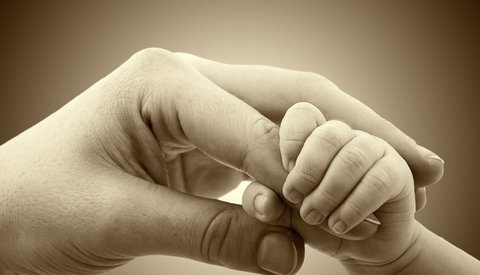Early relationships with caregivers shape a child’s core beliefs (mindset) about self, others, and life in general. It is necessary to understand how memory works in order to appreciate the way core beliefs form and affect a child’s life.
There are two types of memory that develop in the early years.
The first, implicit memory , is present at birth. An infant’s brain is capable of creating “mental models” which involve images and emotions based on experiences with caregivers.
Implicit memory does not involve conscious processing but nevertheless affects the baby’s behavior and reactions. For example, babies with secure attachments have positive images encoded in their minds—“Parents are safe, nurturing, and dependable”—and anticipate more loving care in the future. Insecurely attached babies encode negative images—“Parents are threatening, unloving, and unavailable”—and learn to expect continued harsh or neglectful treatment.
Explicit memory, the second type, develops by two years of age. A child is now learning language, has conscious awareness, and can remember himself in a specific past event. By now the toddler can bring up a sensory image of his parent or caregiver, including images, body sensations, and emotions. The secure child feels calm and relaxed. The insecure child feels anxious and tense.
Emotional experiences of nurturance and protection are encoded in the brain’s limbic area, the emotional center. Over time, these become core beliefs about self, others, and the world in general. These core beliefs become the lens through which children (and later adults) view themselves and others, especially people we become emotionally close to. Core beliefs serve to interpret the present and anticipate the future. The brain is an anticipation machine.
A child’s core beliefs become deeply ingrained and operate outside of conscious awareness, affecting how she perceives herself and interprets events and social situations.
The core beliefs of children who have experienced secure and compromised attachments in early life are as follows:
SECURE ATTACHMENT.
• Self. “I am good, wanted, worthwhile, competent, and lovable.”
• Caregivers. “They are appropriately responsive to my needs, sensitive,
dependable, caring, trustworthy.”
• Life. “My world feels safe; life is worth living.”
COMPROMISED ATTACHMENT.
• Self. “I am bad, unwanted, helpless, and unlovable.”
• Caregivers. “They are unresponsive to my needs, insensitive, hurtful,
and untrustworthy.”
• Life. “My world feels unsafe; life is painful and lonely.”
The goal of therapy is not merely to change children’s behavior, but to change their negative core beliefs. This is quite challenging, because core beliefs are rigid, automatic, and associated with self-protection and survival. As a parent, your secure , loving and dependable relationship with your child becomes the pathway to change and healing. Healthy relationships can change core beliefs over time.


